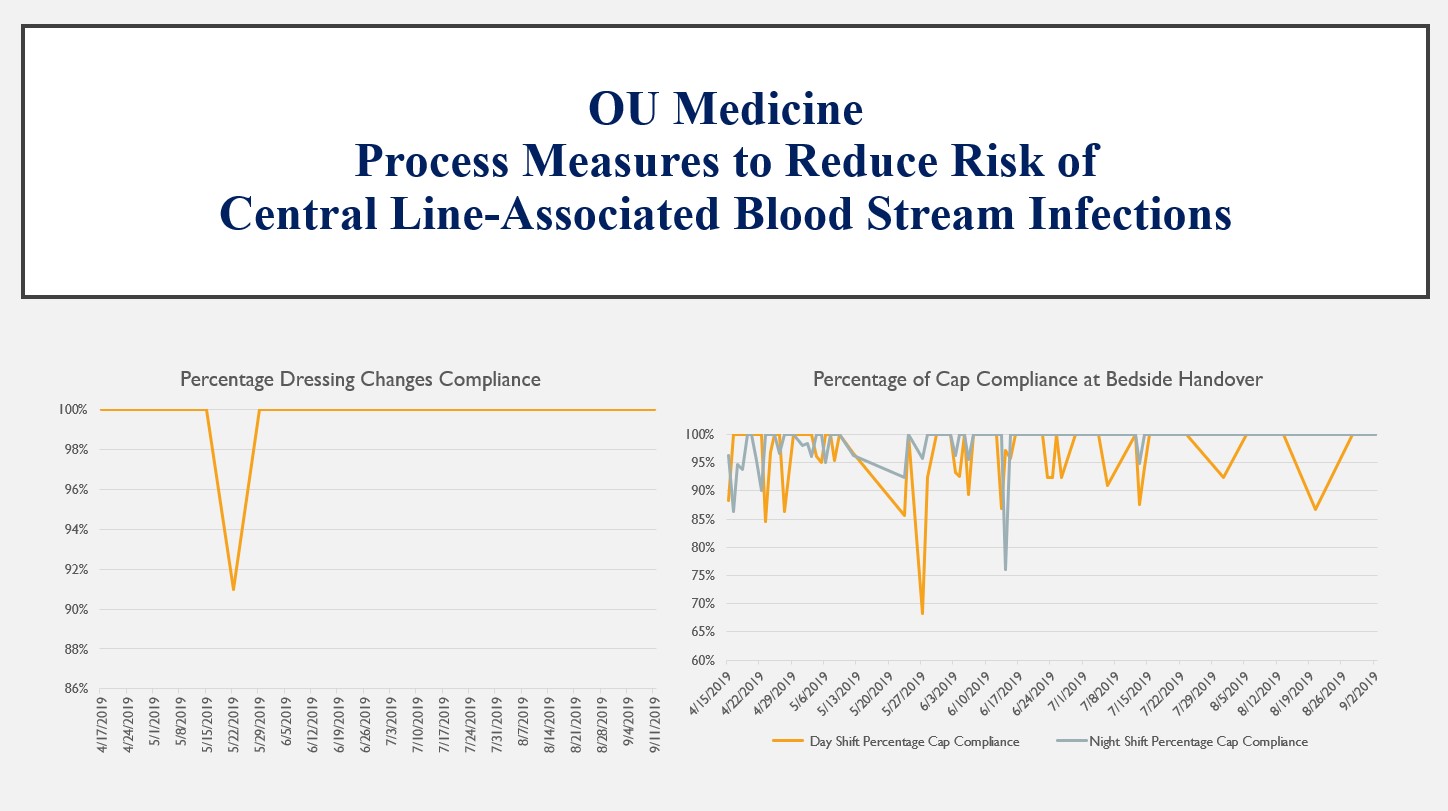Spotlight on OU Medicine’s Reduction of Central Line-Associated Blood Stream Infections (CLABSI) Initiative
Posted on: 2/28/20
OHA continues this weekly series featuring each of the 2019 Excellence in Quality Award submissions to highlight and share successful quality initiatives. For each submission, we will describe how the problem was identified, the improvement goal(s), interventions and outcomes. Please feel free to use this information, duplicate interventions, and share with your staff.
OU Medicine received an Honorable Mention for their Reduction of Central Line-Associated Blood Stream Infections Initiative submitted by
Mindy Miller, MBA-HC, BSN, RN, infection prevention coordinator.
Identifying the Problem: Reduction of CLABSIs became a focus for improvement following an increase in CLABSIs in a medical ICU.
The Goal: The goals were focused on process measures for catheter care: increase compliance with weekly central line dressing changes to 100% and increase utilization of orange caps (alcohol-containing caps that twist on to IV access ports for disinfection and protection) to 100% on the medical ICU unit.
Interventions:
- A day-shift dressing change champion was identified to change all central line dressing with the assistance of the bedside nurse or the pod leader.
- Orange cap utilization compliance was audited by on-going/off-going nurses during handover report.
- The ICU manager, supervisors and bedside nurses were involved in the decision-making, implementation and data collection processes to achieve the goals.
The Outcome:
- Following implementation of a dressing-change champion, dressing change compliance increased to 100%.
- After implementation of compliance with the orange cap by bedside staff during shift handover, compliance increased to >94% for both day and night shifts.
Comments:
Incorporating all unit staff in the process of addressing central line care, and holding staff members accountable to each other was very effective in increasing compliance of utilization of the orange caps as a barrier to prevent infection on this unit. Additionally, identification of a unit dressing-change champion created consistency in the dressing change process, as well as accountability to completing all dressing changes weekly on an established day of the week.
